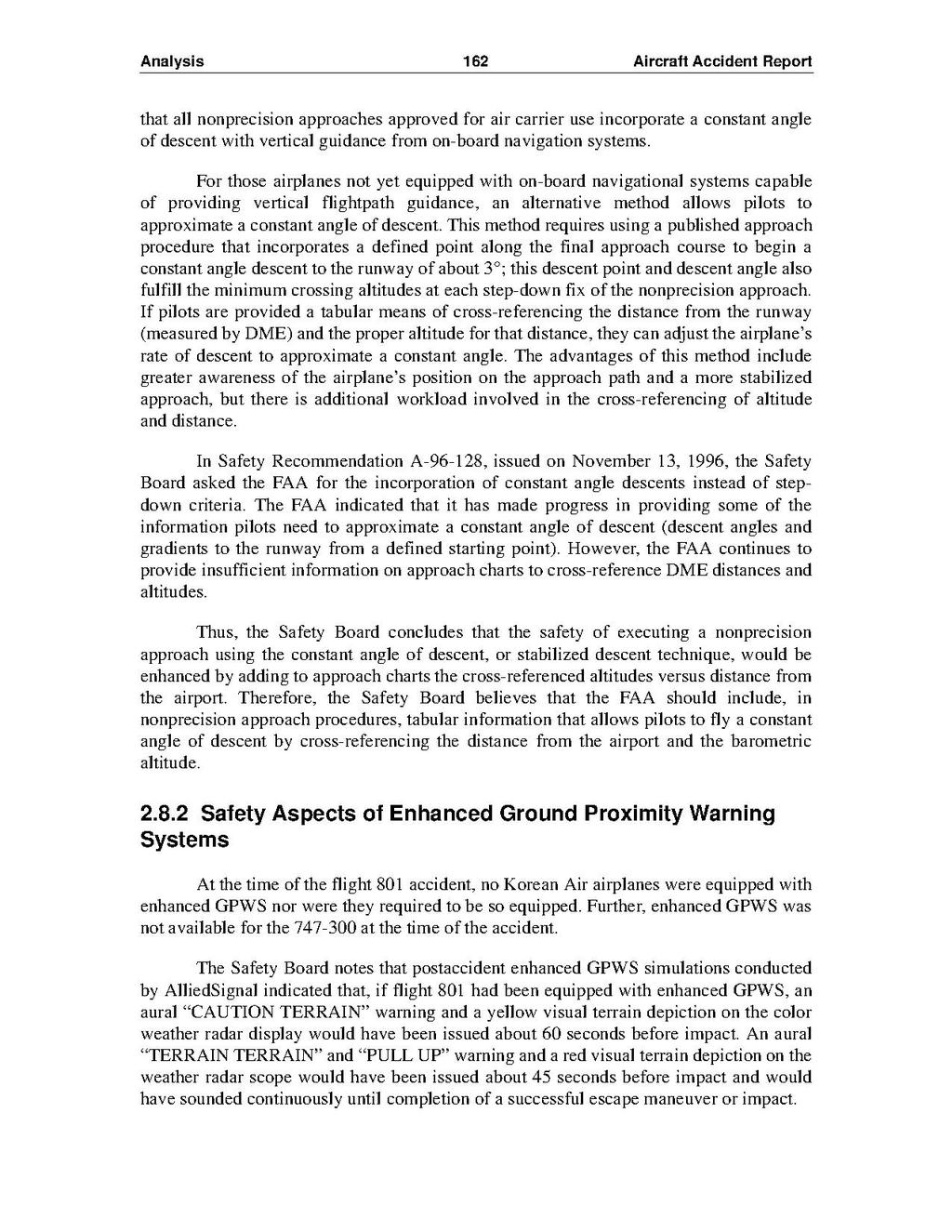that all nonprecision approaches approved for air carrier use incorporate a constant angle of descent with vertical guidance from on-board navigation systems.
For those airplanes not yet equipped with on-board navigational systems capable of providing vertical flightpath guidance, an alternative method allows pilots to approximate a constant angle of descent. This method requires using a published approach procedure that incorporates a defined point along the final approach course to begin a constant angle descent to the runway of about 3?; this descent point and descent angle also fulfill the minimum crossing altitudes at each step-down fix of the nonprecision approach. If pilots are provided a tabular means of cross-referencing the distance from the runway (measured by DME) and the proper altitude for that distance, they can adjust the airplane's rate of descent to approximate a constant angle. The advantages of this method include greater awareness of the airplane's position on the approach path and a more stabilized approach, but there is additional workload involved in the cross-referencing of altitude and distance.
In Safety Recommendation A-96-128, issued on November 13, 1996, the Safety Board asked the FAA for the incorporation of constant angle descents instead of stepdown criteria. The FAA indicated that it has made progress in providing some of the information pilots need to approximate a constant angle of descent (descent angles and gradients to the runway from a defined starting point). However, the FAA continues to provide insufficient information on approach charts to cross-reference DME distances and altitudes.
Thus, the Safety Board concludes that the safety of executing a nonprecision approach using the constant angle of descent, or stabilized descent technique, would be enhanced by adding to approach charts the cross-referenced altitudes versus distance from the airport. Therefore, the Safety Board believes that the FAA should include, in nonprecision approach procedures, tabular information that allows pilots to fly a constant angle of descent by cross-referencing the distance from the airport and the barometric altitude.
2.8.2 Safety Aspects of Enhanced Ground Proximity Warning Systems
At the time of the flight 801 accident, no Korean Air airplanes were equipped with enhanced GPWS nor were they required to be so equipped. Further, enhanced GPWS was not available for the 747-300 at the time of the accident.
The Safety Board notes that postaccident enhanced GPWS simulations conducted by AlliedSignal indicated that, if flight 801 had been equipped with enhanced GPWS, an aural "CAUTION TERRAIN" warning and a yellow visual terrain depiction on the color weather radar display would have been issued about 60 seconds before impact. An aural "TERRAIN TERRAIN" and "PULL UP" warning and a red visual terrain depiction on the weather radar scope would have been issued about 45 seconds before impact and would have sounded continuously until completion of a successful escape maneuver or impact.
